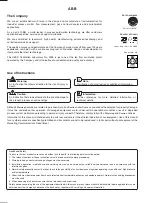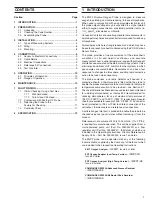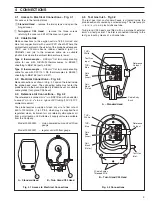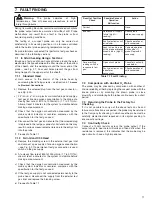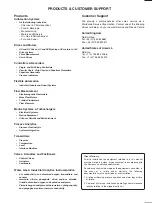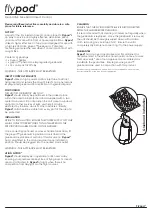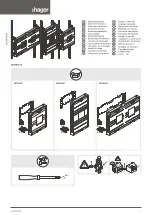
6
69 (2.71)
99
(3.90)
Cable Entry
Reference
Air Line
Entry
Connector Head
102 (4.02)
'A'
Mounting Flange
Probe Outer Sheath
27.5
(1.08)
ZGP2/1: 556 (21.89)
5
(0.2)
ZGP2/2: 953 (37.52)
125
(4.92)
View 'A' on Mounting Flange
Fixing holes to be
drilled by customer
All dimensions in mm (inches)
e
p
y
T
e
l
p
u
o
c
o
m
r
e
h
T
e
p
y
T
h
t
a
e
h
S
K
e
p
y
T
R
e
p
y
T
0
0
8
y
o
l
o
c
n
I
n
i
a
l
e
c
r
o
P
s
u
o
n
i
m
u
l
A
d
e
z
i
l
l
a
t
s
y
r
c
e
R
)
l
a
i
c
e
p
s
(
a
n
i
m
u
l
A
0
0
9
°
C
0
0
9
°
C
0
0
9
°
C
2
5
6
1
°
F
2
5
6
1
°
F
2
5
6
1
°
F
0
0
0
1
°
C
0
5
3
1
°
C
0
0
4
1
°
*
C
2
3
8
1
°
F
2
6
4
2
°
F
2
5
5
2
°
F
…3
INSTALLATION
3.2
Siting – Figs. 3.4 and 3.5
Select the position for the probe avoiding obstructions which
may inhibit insertion or subsequent removal. Dimensions for
the probe are shown in Figs. 3.4 to 3.6. A clearance of at least
25mm in excess of the overall probe length is necessary for
installation or removal procedures.
Caution.
The probe
MUST NOT
be sited:
a) where it is subjected to mechanical or thermal shock.
b) in the presence of aggressive components, e.g.
molten slags, molten silicates, metals and vapours of
lead, zinc, silicon and vanadium.
c) where it is subject to temperatures in excess of those
specified in Table 3.1.
d) where gas components attack the platinum electrode
above 600
°
C (1112
°
F), e.g. in atmospheres containing
sufficient concentrations of heavy metals such as
sodium, vanadium, lead, zinc etc.
e) where the connector head temperature can exceed
100
°
C (212
°
F).
*Reduced probe cell life may result if probe is operated
continuously above 1250
°
C (2282
°
F).
Table 3.1 Temperature Limits
Fig. 3.4 Overall Dimensions – Standard Head


